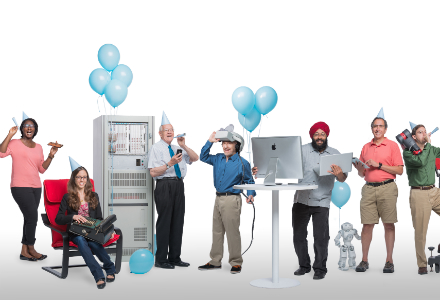Comp-Sci turns 50
Computer science research conducted at UNC-Chapel Hill has helped shape and guide technological advances, and it has played a critical role in propelling the Research Triangle region — and the state — into the Digital Age.

Computer science research conducted at UNC-Chapel Hill has helped shape and guide technological advances, and it has played a critical role in propelling the Research Triangle region — and the state — into the Digital Age.
It all started in 1963 with a visit from computer scientist Frederick P. Brooks Jr., project manager for the revolutionary IBM System/360 family of computers.
Brooks interviewed for a job running the campus computation center but decided he wasn’t interested in the position.
But the lecture he delivered as part of the interview process — “Ten Research Problems in Computer Science” — fueled the imaginations of a handful of campus leaders, including Southern literature professor and then-graduate school Dean C. Hugh Holman.
Holman and other campus leaders decided that UNC should form a department devoted to teaching and research in computer science, a field so young that scholars were still debating what it should be called.
The following year they asked Brooks back to lead the new venture. In 1964, UNC’s department of information science was born. It was the second computer science department (after Purdue University’s) in the nation.
This year, UNC’s computer science department is celebrating its 50th birthday, looking back over a half-century of high-tech changes that Holman, Brooks and others could not have imagined in the 1960s.
“You can’t think that far ahead,” said Brooks, Kenan Professor, who spent 20 years as department chair and still, in his 80s, teaches and advises graduate students. “Since I [became] interested in computers we’ve been through six technical revolutions. Who would have predicted the iPhone? Who would have predicted the Internet?”
Creating through collaboration
Many university computer science departments grew out of math departments or engineering schools. But Brooks and his fledgling department began as a stand-alone enterprise.
However, Brooks wasn’t interested in being separate from other academic disciplines. Instead, he and other early faculty programmed a culture of collaboration and interdisciplinary research into the department’s human operating system.
To keep reading this story, visit the College of Arts & Sciences




